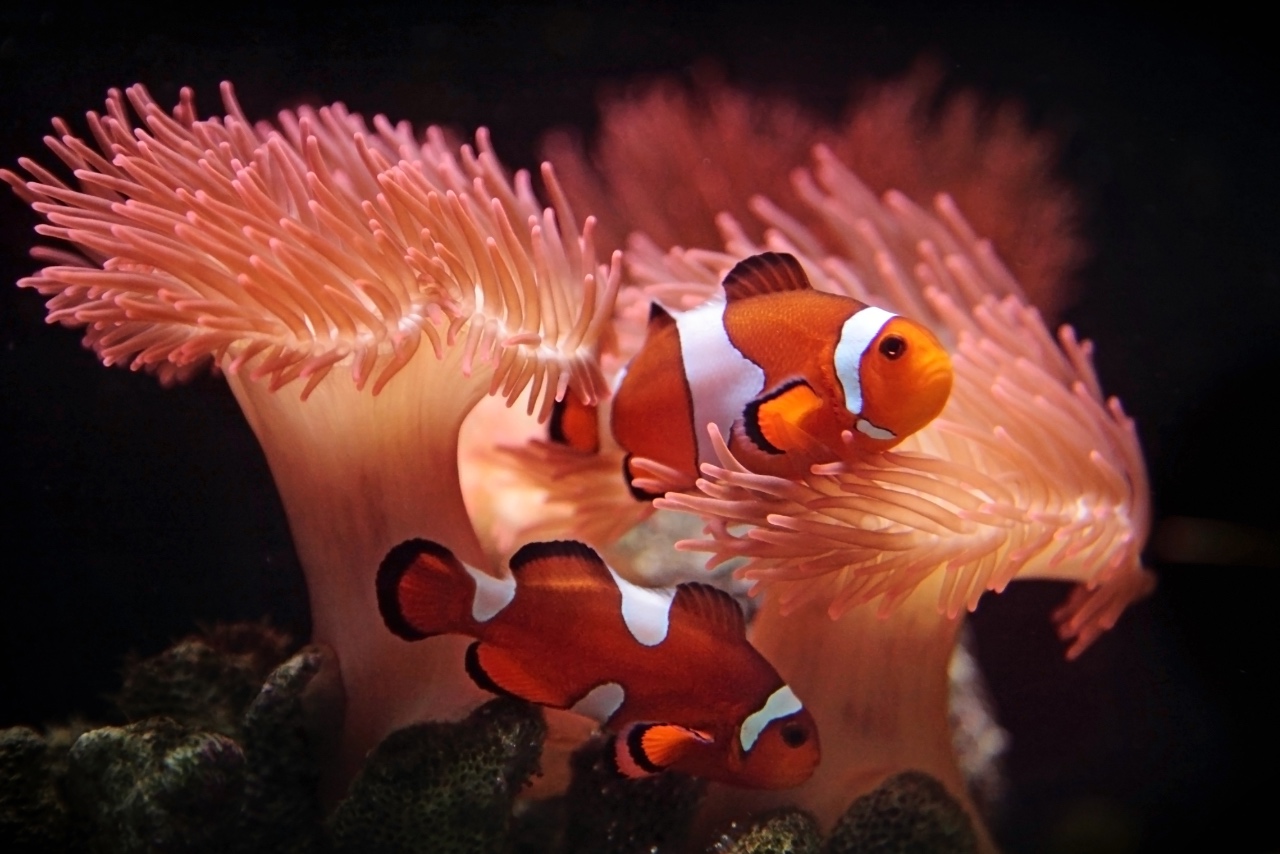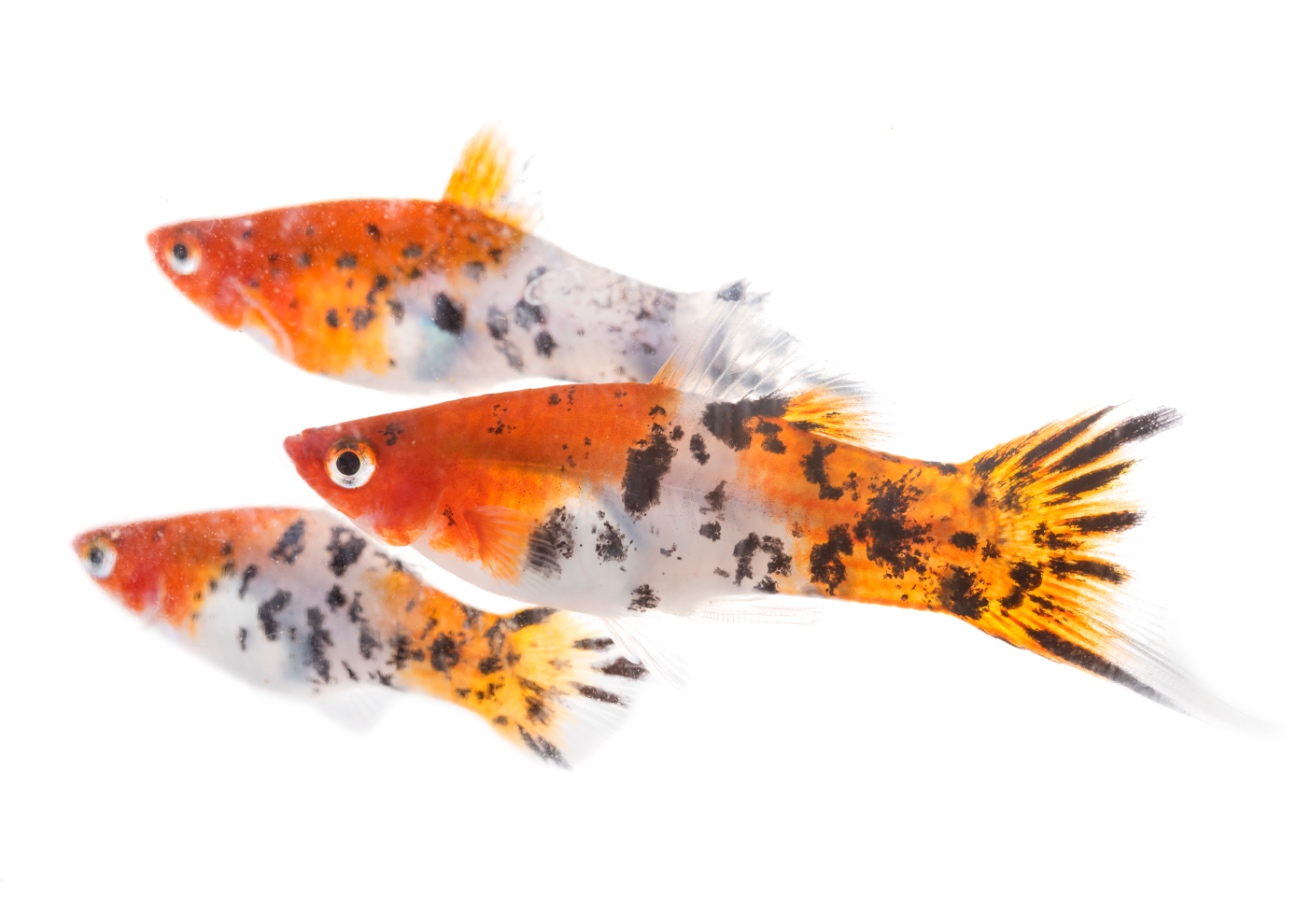Oscar fishes are beautiful with vivid patterns and, when they swim, look elegant. Their intimidating appearance can easily deceive anyone. But before you plan to buy a freshwater Oscar fish for your aquarium, it is important to know everything about them.
Oscar (fish) hides aggression under their colorful skin. They are quite active and intelligent. It can become quite challenging for beginners to keep them. So, it is advised only the aquarist who has kept other aggressive fishes before should only keep Oscars.
Oscar cichlids are not ideal for keeping in the community tank. They can attack or fight with other fish and hurt themselves or others. However, they are omnivores, so they are easy to feed, and a variety of food can be added to their diet.
To know more about them, keep reading till the end.
| Category | Rating |
|---|---|
| Family | Cichlidae |
| Diet | Omnivorous |
| Temperament | Aggressive/Territorial |
| Care Level | Moderate |
| Size | Up to 12 inches (18 inches sometimes) |
| Color Form | Various |
| Lifespan | Up to 20 Years |
| Compatibility | Large, Passive Fish |
| Tank Set-Up | Freshwater, Rocks, and Caves |
| Minimum Tank Size | 55 gallons |
Oscar Fish Overview
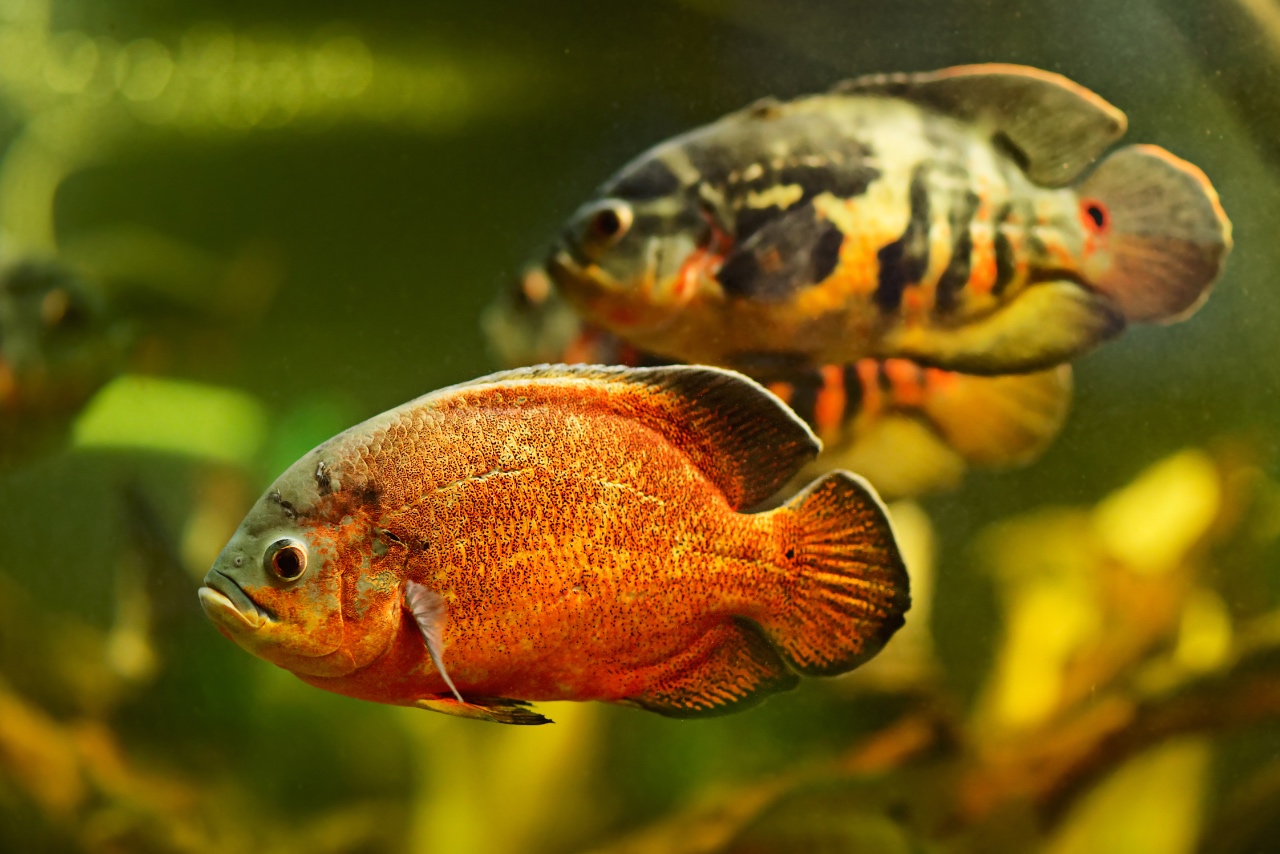
From the family Cichlidae, Oscars are also known by the name Astronotus Ocellatus and Astronotus Tigris.
Most of them are native to South America, just like other members of its family.
They are easily found in the Amazon or rivers of other Tropical countries like Columbia, French Guiana, Brazil, Peru, and Brazil. They can be kept in a home aquarium, and aquarists worldwide, especially from North America and China, are known to keep them.
The Oscars are infamous for their aggression but famous for their vivid appearance and color. They are also found in many patterns. They can become quite territorial and harm any fish that comes near them.
How Long Do Oscar Fish Live?
Oscar fish live nearly 20 years if kept in a healthy environment and fed well. You can buy Oscar (fish) from any pet store, and a healthy Oscar cichlid costs $10.
Oscar Fish Behavior
The Oscars dwell in the mid-level of the tank but are quite territorial. They will destroy anything that comes their way. They can also be seen spending time at the bottom, uprooting plants and decorations, or searching for food. Oscar cichlids’ personalities are different from those of other fish.
Their aggression is at its peak during the mating season, while feeding, and if the tank is overcrowded. It can be controlled by choosing the right mates for them and keeping the number of fish as low as possible.
Types of Oscar Fish
The Oscar fish can become large, and most species can reach up to 12 inches. It quickly becomes fully mature. The Oscar fish’s growth rate is one inch per month compared to its long lifespan.
Their long oval body is usually covered in vivid patterns with bright or bold coloration. Their fins have a fan-like look, with dorsal and anal fins extending along the body.
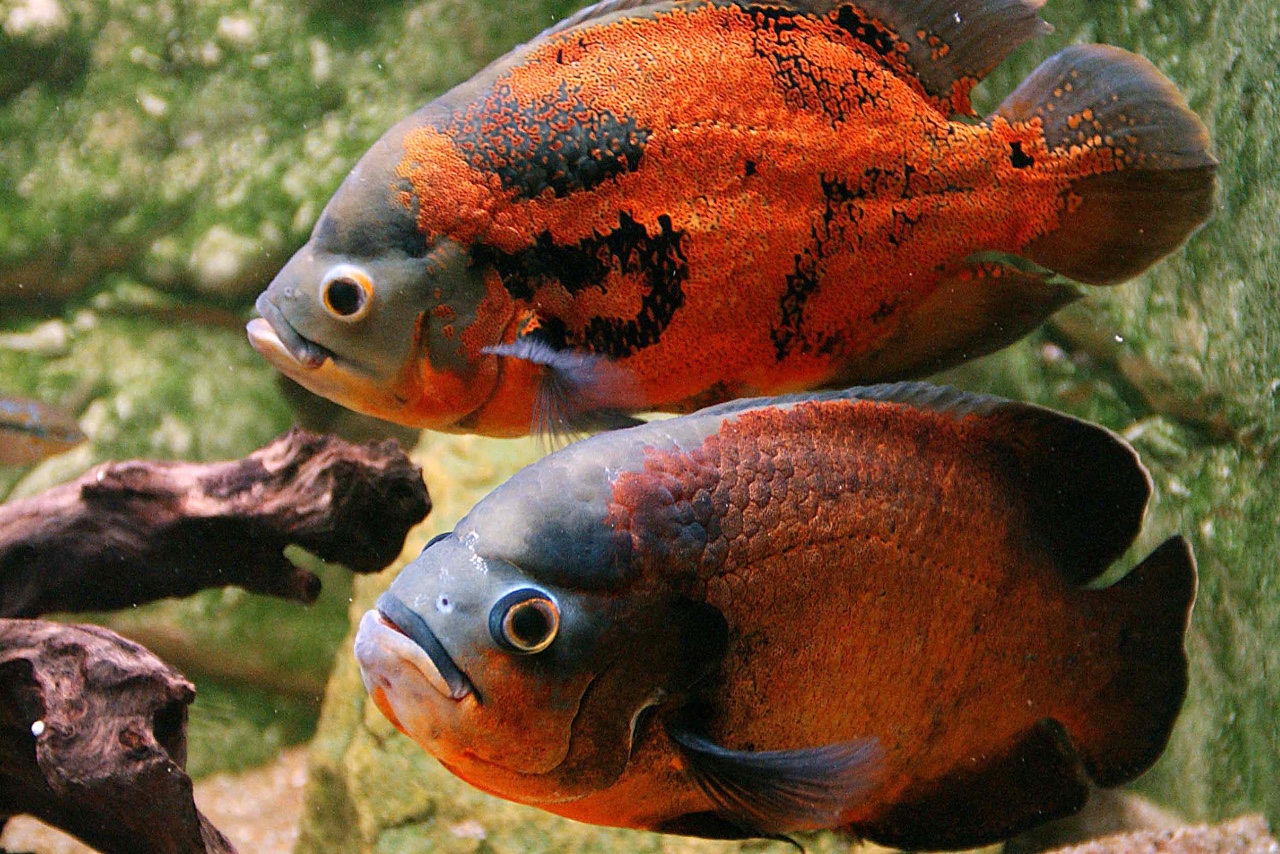
The males and females look alike and can only be distinguished by examining their genitals closer. This makes them monomorphic.
The experts have created many varieties of Oscars by breeding them in captivity. The original Oscars have irregular black and orange splotches over their body. They are also considered Tiger Oscar fish, but the color may change with time.
Oscars are now found in other different colors as well. The species with solid red or yellow colorations are called Red Oscar fish and Lemon Oscar fish, respectively. They have either black or white fins that add charm to their appearance.
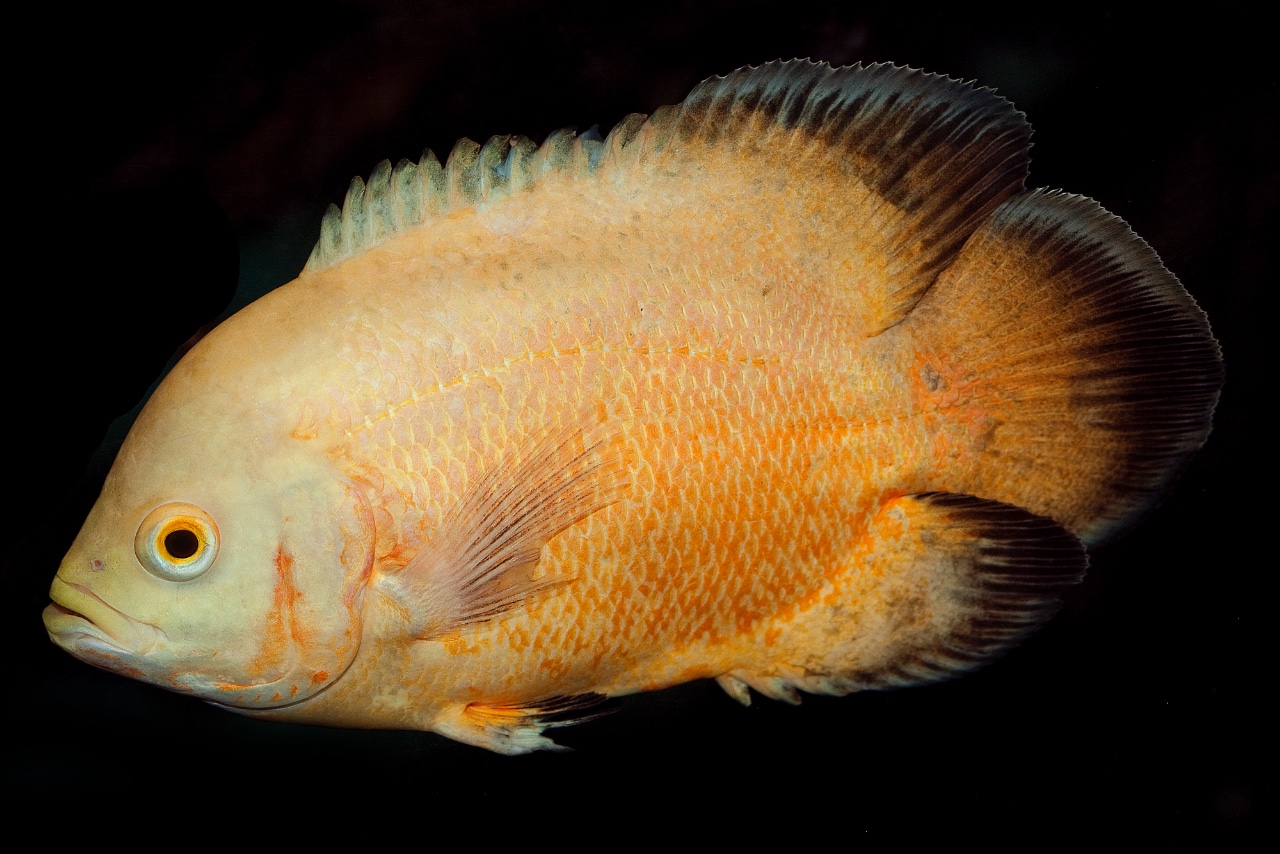
Another famous choice among Oscar lovers is Albino Oscar fish that has bold white color all over their body.
Oscar Tank Setup
For keeping any fish happy and thriving, it’s important to replicate the water conditions in their natural habitat. They are found in rivers like the Amazon, where strong water flows. So, you have to set up an Oscar fish tank accordingly.

Take a brief look at the table to understand the tank requirements for your Oscar –
| Conditions | Parameter |
|---|---|
| temperature | 74-81°F |
| pH | 6-8 pH |
| water | 5-20 KH |
The given conditions are easy to create and maintain in the tank. The water in the tank should be warm, which can be maintained through the heater and checked through the thermometer. A filter will keep the water clean and help create waves for them in the tank.
Choose a soft substrate like sand for the bottom instead of the one with granules. The soft substrate will prevent Oscar from getting scratched while searching or digging for food.
You can place any plant or decorations of your choice. Add caves for each Oscar (fish) so that they can hide whenever they feel threatened. To make the tank’s environment look natural, add rocks and bogwood around the tank.
Whatever you put or fix in the tank, make sure they are firmly attached. Oscars are known for digging into everything they can. Oscars can uproot the plants and decorations, and you will have to locate them again and again. Hornwort is a floating plant that will be able to take the nipping from the fish. You won’t need to put a lot of effort into maintaining them.
The substrate should be sand to keep Oscar (fish) from getting hurt while digging. If the substrate is granules based, they can end up scattering them everywhere. They are not only aggressive but also an active swimmer. They are also powerful enough to jump out of water or make others jump. So, make sure the lids of the tank are also closed or fixed firmly.
Oscar Fish Tank Size
Oscars are large and territorial so you will need an aquarium with a larger tank capacity. The small tank won’t let them swim freely and can cause stress in them instead. This stress can make them aggressive and ill.
How Many Gallons Does One Full-size Oscar Need?
For starters, 55 gallons is enough for keeping a single Oscar cichlid, and you should add 20-30 gallons per Oscar fish you add to the tank. Each Oscar will need its territory and space to swim. Otherwise, they will start fighting over territory.
Oscar Tank Mates
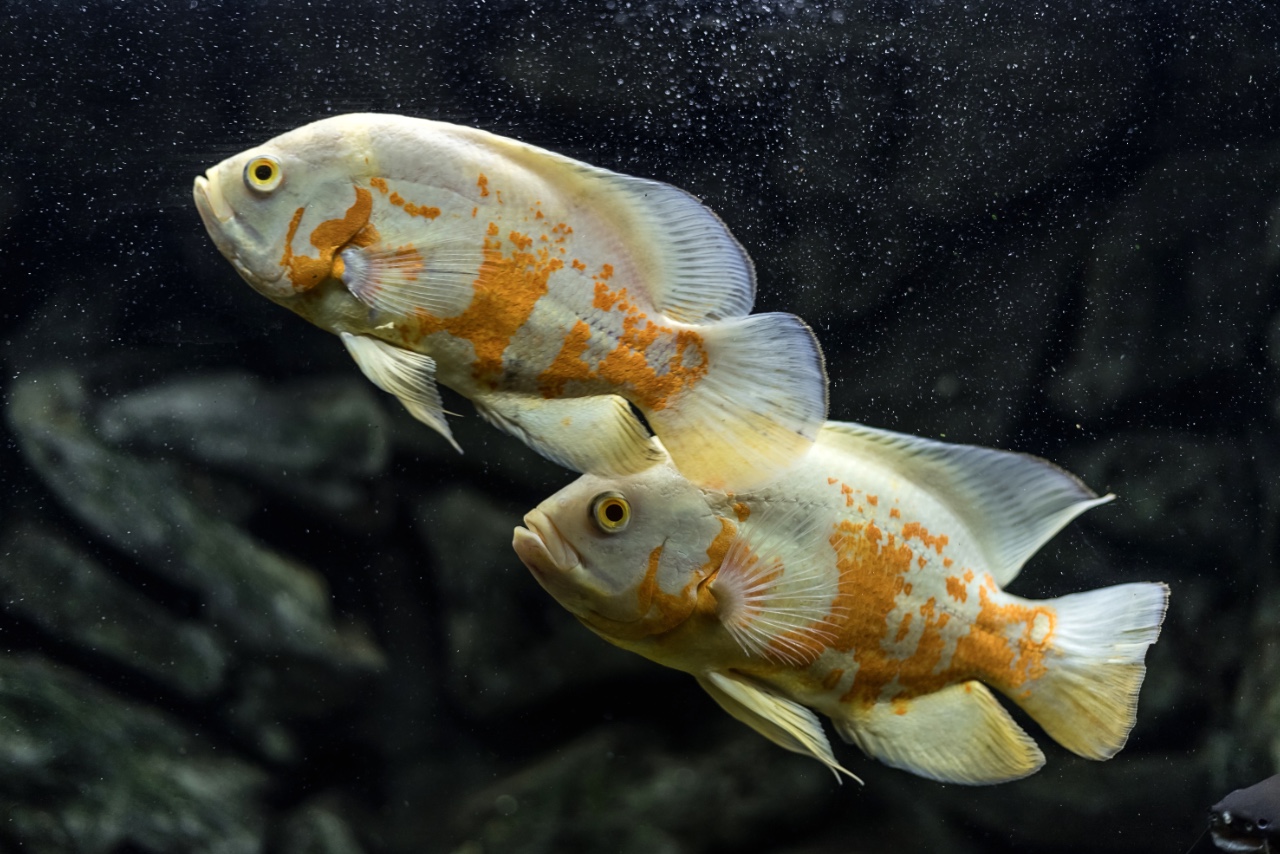
Selecting an Oscar tank mate is not easy. The Oscar fish is not good at making friends or being social. It could attack the other fish if they entered Oscar’s territory. If the fish is small, Oscar cichlid will turn it in for dinner. In their natural habitat, Oscars can be found living with other fishes. You should know which fish is compatible with Oscars.
Still, keeping Oscars in a community tank isn’t a good idea. But if you are too determined to make one, make sure to add only the species that are compatible with them and won’t cause any trouble.
Fishes that are big, like Oscars, and have passive temperaments can become great companions. They won’t come in their way, and if they did, they could defend themselves.
What Fish Can Live with Oscars?
Some popular freshwater fishes that can become their companion include – Convict Cichlids, Severum Cichlids, Arowanas, Silver Dollars, Jack Dempseys, Bichirs, Sailfin Plecos, Firemouth Cichlids, Jaguar Cichlids, and Green Terrors. Don’t put small creatures in the tank, like small fish, snails, or shrimp. They will quickly turn into the food for the Oscars.
You can also put Oscars in a group, but only if there is ample space for swimming and marking it as their territory. The environment also determines the level of aggression in the Oscars.
Oscar Feeding and Diet
Let’s discuss the Oscar fish diet. Like other members of its family, Oscar is an omnivore. Providing them with healthy food is not that difficult, and they will eat whatever you feed them. In their natural habitat, small fish, crustaceans, plant debris, larvae, and insects make up a large part of their diet.
What Do Oscars Eat?
Beginners always want to know what to feed their Oscar cichlid. In an aquarium, you can feed them anything from premade to homemade and vegetables to meat. You can feed them vegetables by chopping them into small pieces or mashing frozen peas. For meat, you can put brine shrimp, bloodworms, and daphnia into the water. Oscars will happily hunt them and eat them. Add live food only when they are more than 4 inches.
In addition, include high-quality flakes and pellets in their diet. They are rich in nutrition that will help in the development of your Oscar. Some food specifically made for Cichlids is also available in the market.
Oscars are gastronomes; they won’t mind eating the whole day. They can get competitive and aggressive while eating. But it can lead to overeating, which is unhealthy for any fish.
When Oscars are young (less than 4 inches), you can feed them thrice a day and only the amount they can finish in 3 minutes. You can be fed twice a day for Oscars, more than 4 inches, and adults. You can limit the feeding to once in 4 days to once a week for adults. It gives time to process the food properly.
Also, put another piece of food only when they have completely swallowed the first one. They are competitive, so they will simply spit the food without finishing it to catch other food dumped in the tank. Make sure to add variety to the food. It will provide a wide range of nutrition. Oscar fish grow quickly, and they thrive only when they are fed properly.
Oscar Fish Care
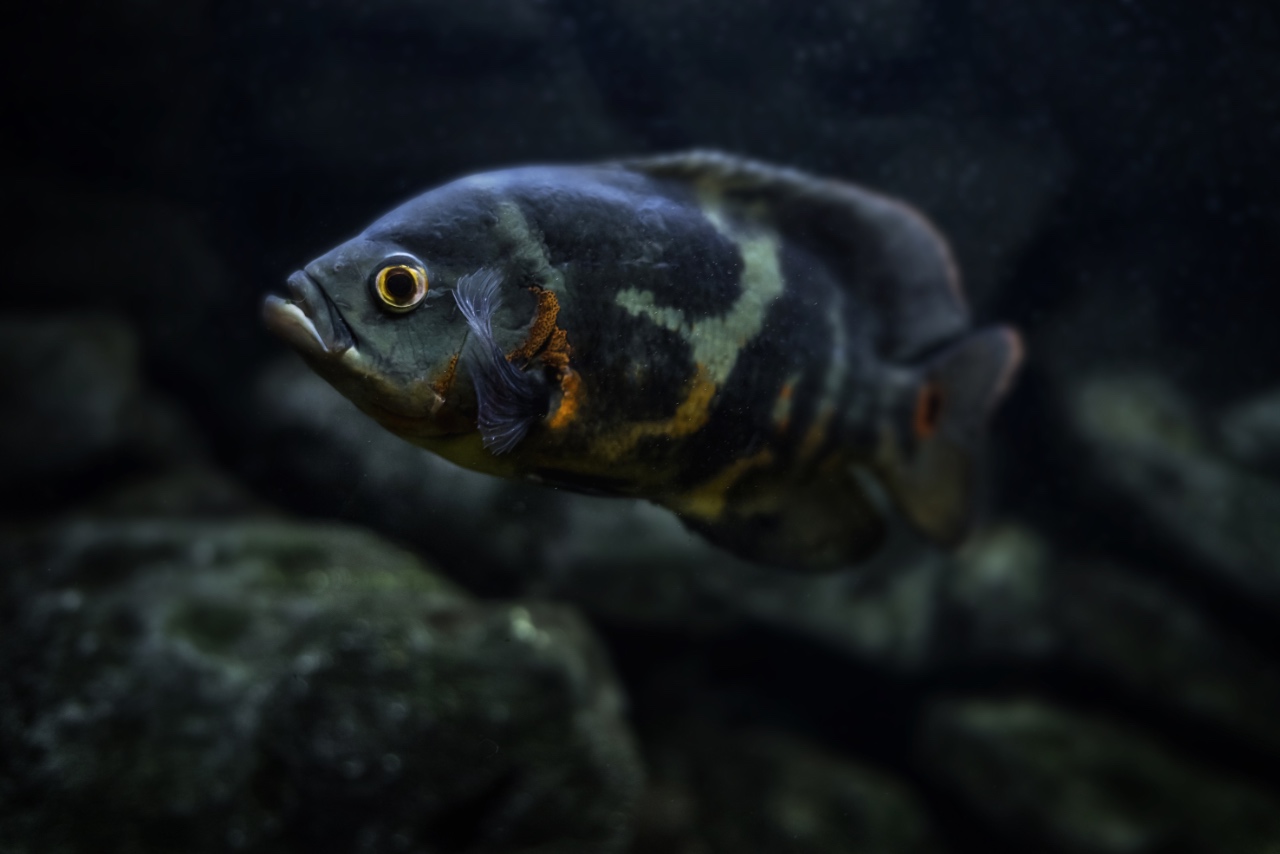
Oscar (fish) needs more care than any other fish. It is important to provide them with a wide range of nutrition in their diet. The deficiency of nutrition or overfeeding can lead to many diseases in them.
Also, changing the water once or twice a week is important. It will maintain the water conditions and help reduce the tank’s toxin level. The one common disease found in members of the cichlid family is the ‘hole in the head’ disease.
| Disease | Hole in the Head |
|---|---|
| Caused by | Parasite ‘Hexamita’ |
| Symptoms | Lesion on head or body, loss of appetite, faded coloration, white stringy feces |
| Found in | Large Cichlids like Oscars and Discus |
| Cure | Add antibiotics to the tank and nutrition-rich foods like broccoli, etc. |
Oscar Fish Breeding Guide
Oscar is another hard-to-breed fish. You can’t just put a pair of male and female Oscars in the tank and expect them to mate. They won’t mate unless they find a suitable partner.
You have two options to make sure they breed. First, you can buy a mating pair that is already in stock. Second, you can buy a group of young Oscars and wait until they grow up and find suitable partners. The second process can take 1-2 years, while the first one won’t take much time.
The rainy season is the perfect time for Oscars to mate. In an artificial tank, you can make the mating environment by lowering the water temperature to a few degrees and sprinkling water on the surface for a few minutes.
The spawning fish indicates her partner by flaring gills and waggling its fin. The pair then cleans the rock surface for eggs. A healthy and large Oscar female can give birth to up to 3000 eggs.
After the eggs are laid, the parents guard them. The female fanning them while the male keeping other fish away from them. It can take 2-3 days for the eggs to hatch. You can also move the eggs to another tank with a sponge filter. This will increase the chances of survival for the fries.
The fries need constant care and can be fed a small amount 3-4 times a day. This will trigger their growth. However, you can put a group of Oscars in a small tank. This will cause stress and can hinder their growth as well.
Should You Keep Oscar Fish?
Oscars are hardy, but keeping them in an aquarium already set up is not a good idea. It is advised to set up a tank keeping Oscar’s requirements in mind.
Once the tank is set and running, you won’t face any big challenges with it. Oscars will add vividness and variety to your tank. Their activities will keep you engaged, and they will soon become your favorite.
Preparing for breeding them can be challenging, but you will get a chance to experiment with their diet. You can add variety to the diet to help maintain the nutrition level.
Do you own an Oscar fish or plan to have one? Do you keep them in pairs or singles? Let us know.


